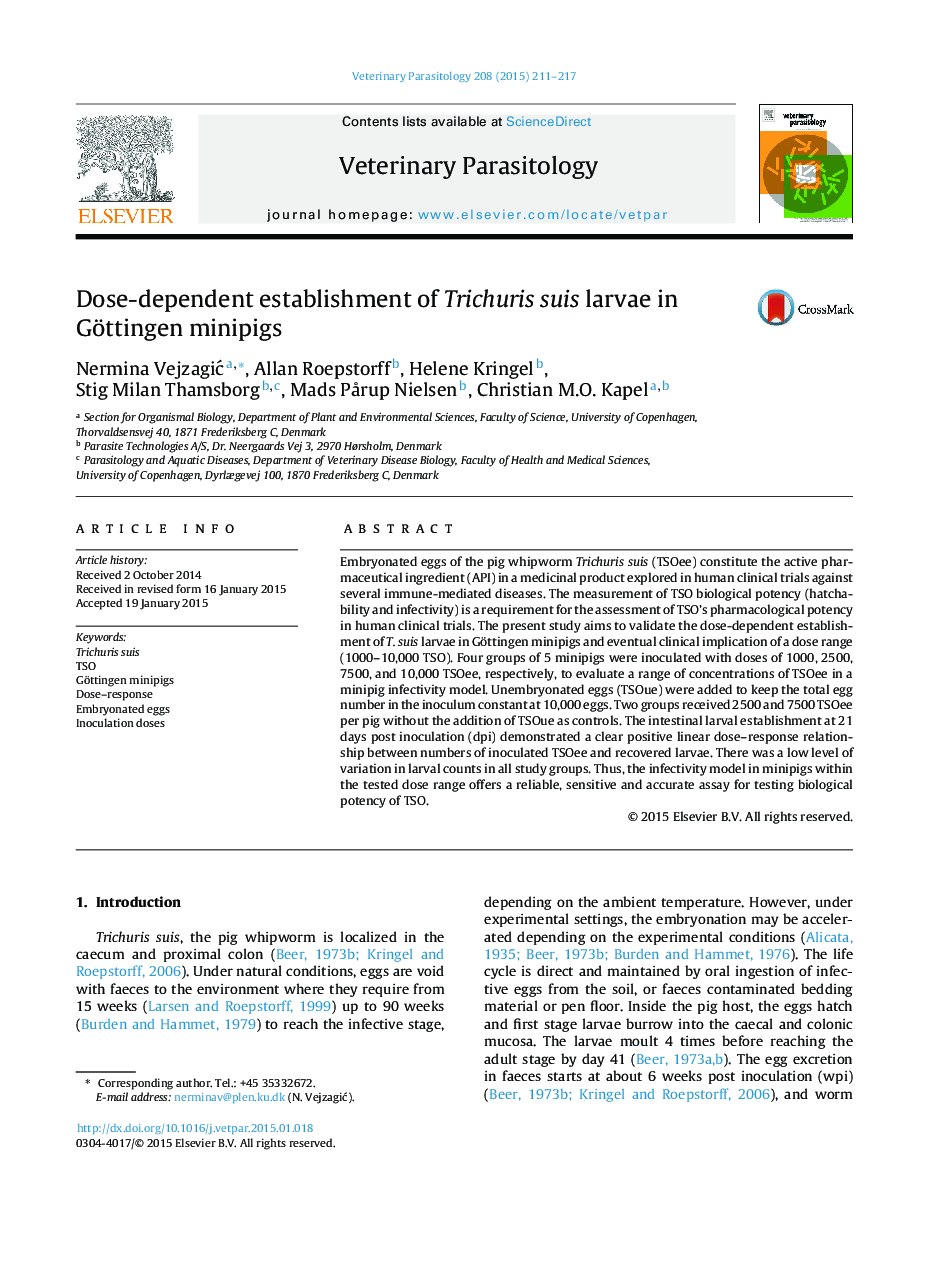| Article ID | Journal | Published Year | Pages | File Type |
|---|---|---|---|---|
| 5802525 | Veterinary Parasitology | 2015 | 7 Pages |
â¢The minipig infectivity model measures the biological potency of T. suis ova (TSO).â¢Strong linearity between embryonated eggs and recovered larvae in minipigs.â¢The model is accurate and safe within the range of 1000-10,000 TSO.â¢Addition of unembryonated eggs does not negatively impair the infectivity model.
Embryonated eggs of the pig whipworm Trichuris suis (TSOee) constitute the active pharmaceutical ingredient (API) in a medicinal product explored in human clinical trials against several immune-mediated diseases. The measurement of TSO biological potency (hatchability and infectivity) is a requirement for the assessment of TSO's pharmacological potency in human clinical trials. The present study aims to validate the dose-dependent establishment of T. suis larvae in Göttingen minipigs and eventual clinical implication of a dose range (1000-10,000 TSO). Four groups of 5 minipigs were inoculated with doses of 1000, 2500, 7500, and 10,000 TSOee, respectively, to evaluate a range of concentrations of TSOee in a minipig infectivity model. Unembryonated eggs (TSOue) were added to keep the total egg number in the inoculum constant at 10,000 eggs. Two groups received 2500 and 7500 TSOee per pig without the addition of TSOue as controls. The intestinal larval establishment at 21 days post inoculation (dpi) demonstrated a clear positive linear dose-response relationship between numbers of inoculated TSOee and recovered larvae. There was a low level of variation in larval counts in all study groups. Thus, the infectivity model in minipigs within the tested dose range offers a reliable, sensitive and accurate assay for testing biological potency of TSO.
